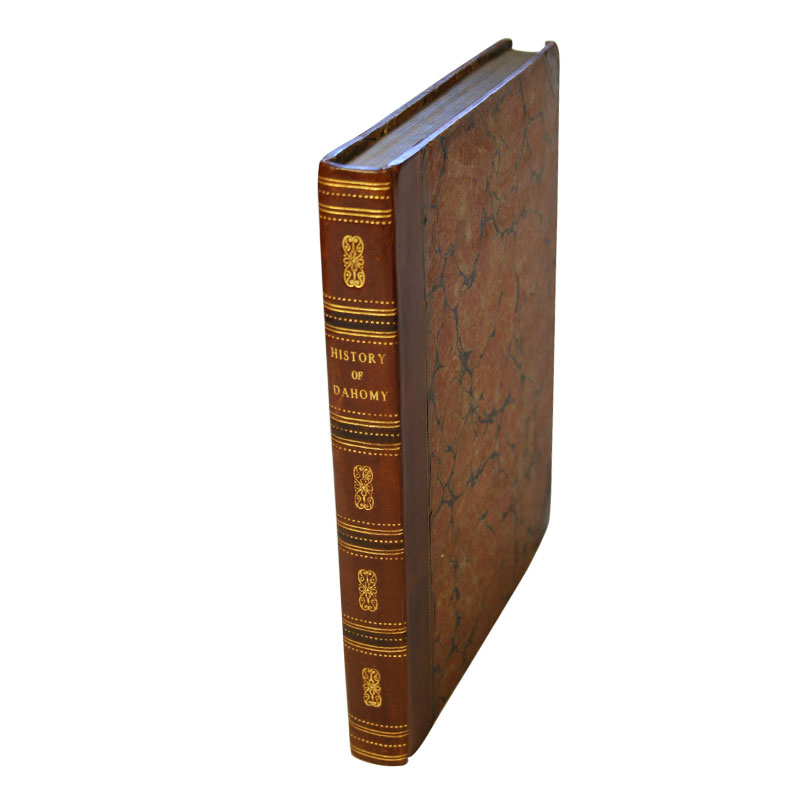DALZEL, Archibald. The History of Dahomy, an Inland Kingdom of Africa
£2,000.00
DALZEL, Archibald. The History of Dahomy, an Inland Kingdom of Africa; Compiled from Authentic Memoirs; With an Introduction and Notes. By Archibald Dalzel, formerly Governor at Whydah, and now at Cape-Coast-Castle. London: Printed for the Editor, by T. Spilsbury and Son, Snow-Hill, and sold by J. Evans, Pater-Noster-Row, 1793 Small 4to. xxxvi,xxvi,230pp. engraved folding map as frontispiece, 6 engraved plates, subscribers' list.
DALZEL, Archibald. The History of Dahomy, an Inland Kingdom of Africa; Compiled from Authentic Memoirs; With an Introduction and Notes. By Archibald Dalzel, formerly Governor at Whydah, and now at Cape-Coast-Castle. London: Printed for the Editor, by T. Spilsbury and Son, Snow-Hill, and sold by J. Evans, Pater-Noster-Row, 1793 Small 4to. xxxvi,xxvi,230pp. engraved folding map as frontispiece, 6 engraved plates, subscribers’ list.
Archibald Dalzel (1740-1818) was sent to Anoumabu on the Gold Coast in 1763 as a surgeon employed by the Company of Merchants trading to Africa. After trading in slaves, he became Governor of the British Fort at Whydah during 1767-1770. In 1791 he was appointed Governor of Cape Coast Castle and this work was published while he was there; he resigned as governor in 1802. It is a compilation drawn from his own experiences as well as from the works of Robert Norris, whose personal knowledge of the Guinea coast appears to have reached back at least as far as 1755, and those of William Snelgrave.
The map is by Robert Norris and the account of his journey to the Court of Bossa Ahadee, King of Dahomey, is included. Dalzel adds material from other authors and includes an introduction by himself. In his introduction to the 1967 reprint, J. D. Fage points out that: ‘despite his pro-slave trade bias, and despite the fact that modern research can fault him on points of detail, [Dalzel] is no mean historian of eighteenth-century Dahomey and its neighbours. His History of Dahomey deservedly served as a standard source for many other distinguished writers on Dahomey, including Sir Richard Burton and Professor Melville Herskovits. It can still be studied with profit, and read with pleasure for its nineteenth century prose.’ Half calf with contemporary marbled boards, endpapers and edges. The spine has been carefully rebacked, lettered and tooled in a contemporary style, occasional slight spotting on the plates, the text unusually clean with no offsetting, contemporary bookplate of Thomas Dawson, later bookplate of Edward Geoffrey Sergeant; an excellent copy. [Cardinall: 396] [Hogg: 170].



